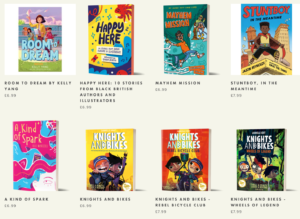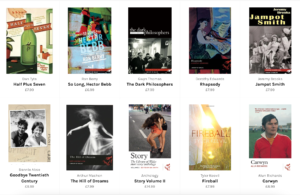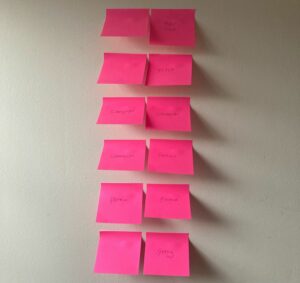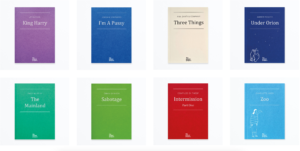5 things I learned on Exeter’s new MA Publishing
Sorry! You need to be a member of The Lit Salon to read this article. Sign up here, for as little as £7 a month.
-
Go your own way
I had initially assumed I would have to approach roles with strict industry methods, but after working on multiple projects I realised I could take my own approach. There are certain rules, for example if you’re using a style guide you need to adhere to it, but you can find methods that work well for you.
When it came to structural changes during the copy editing process, I found it difficult to move paragraphs on a screen without losing track of what had moved and what hadn’t. Working with short stories, if I found one needed major restructuring I would print it out, mark it up, and cut up the paragraphs so that I could see the whole story in front of me and play around with the structure more freely and easily. This method could be adapted for particular sections of a longer-form manuscript. You could also use post-it notes with paragraph summaries instead of printing out pages.
Example: I found it difficult to visualise the order of the pages for a book I was working on, so I used post it notes to see the whole spread and move pages around easily.
-
There’s more to publishing than books
When I started the course I thought I would end up working in one of two camps: fiction books or non-fiction books. Emerging from the course, I’m interning with a multi-disciplinary publisher working with digital, audio and print publications. Publishing is a highly creative and innovative industry; from zines to medical journals, there are so many different avenues, and they are constantly changing and evolving. It’s completely possible to merge avenues and create new spaces.
Assorted avenues:
| Model | Genres |
| Trade (traditional fiction and non-fiction) | Children’s
Young Adult Special Interest (hobbies, history etc.) Short stories Poetry Romance, Historical fiction etc. Art Cookery |
| Education | Textbooks
Guidebook |
| Academic Journals | Medical
Humanities STEM |
| Magazines | Home and lifestyle
Special interest (music, crafts, sports etc.) |
| Newspapers | Regional
National |
| Digital | Journals
Magazines |
| Audio | Audiobooks
Podcasts |
-
Small is beautiful
Bigger publishers are often less diverse, and spread their genres to garner a wide audience. Often, small publishers are pushing boundaries and creating books with strong values.
Look at what publishers are producing, do their decisions fall in line with your ambitions and beliefs? The job hunt can become monotonous and tiring, but make sure you check that you’re applying to companies where you can see yourself working. Check that their publications match the company values they promote.
Examples of small publishers expanding publishing boundaries:
- The Pound Project produces limited edition books so that they can prioritise fair pay for authors and affordability for consumers.
- No Bindings blends print, audio and workshops.

The Tilt, created by The Lit Platform and No Bindings
- Knights Of publishes inclusive and diverse children’s books.

Round Table Books display of Knights Of titles. Image copyright Round Table Books.
- Parthian publishes Wales’s forgotten classics and new writing.

Image copyright Parthian
-
Time management
Processes take time; often multiple roles overlap, so you could be waiting for feedback from different people before you can move forward with the task you’ve been set.
Editing can be tiring – reading with a high-level of precision for a long time is hard on the eyes and mind. Allow time for breaks so that you’re able to give the text the amount of focus it needs.
Creating can be tiring – when creating cover designs I found that I needed to step back at times; it’s easy to overthink. It can take a while to settle on an idea you like, that’s normal and you should allow time for that idea generation and development.
Allow time for trial and error, and time to ask for help.

